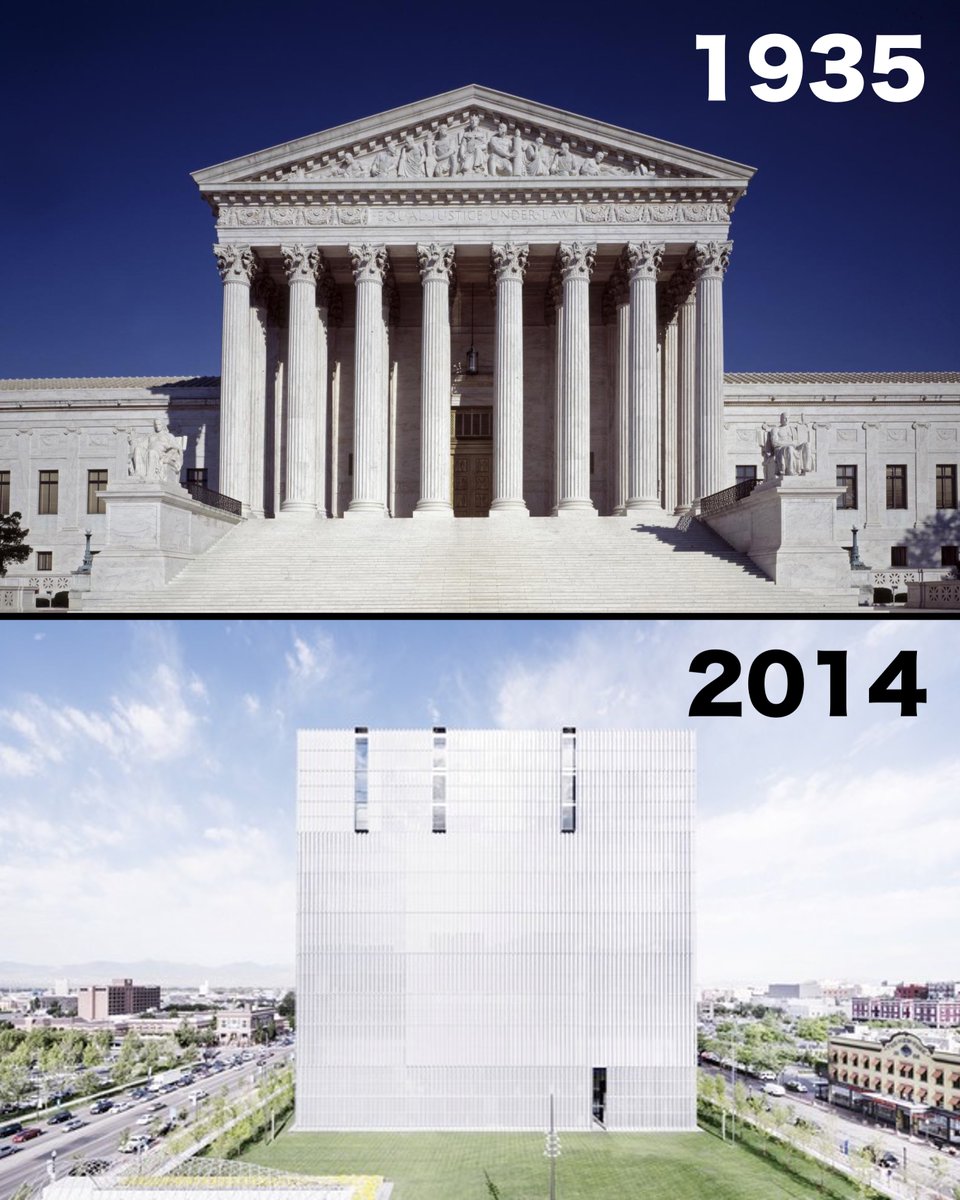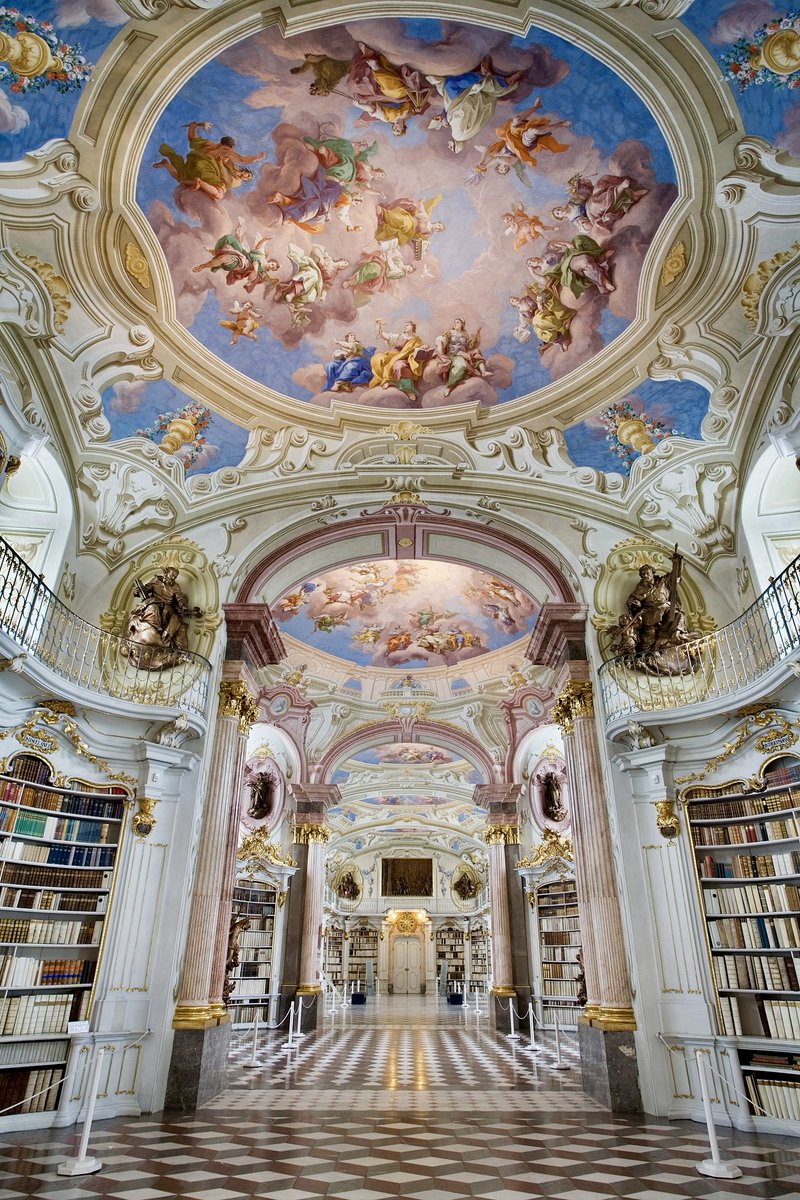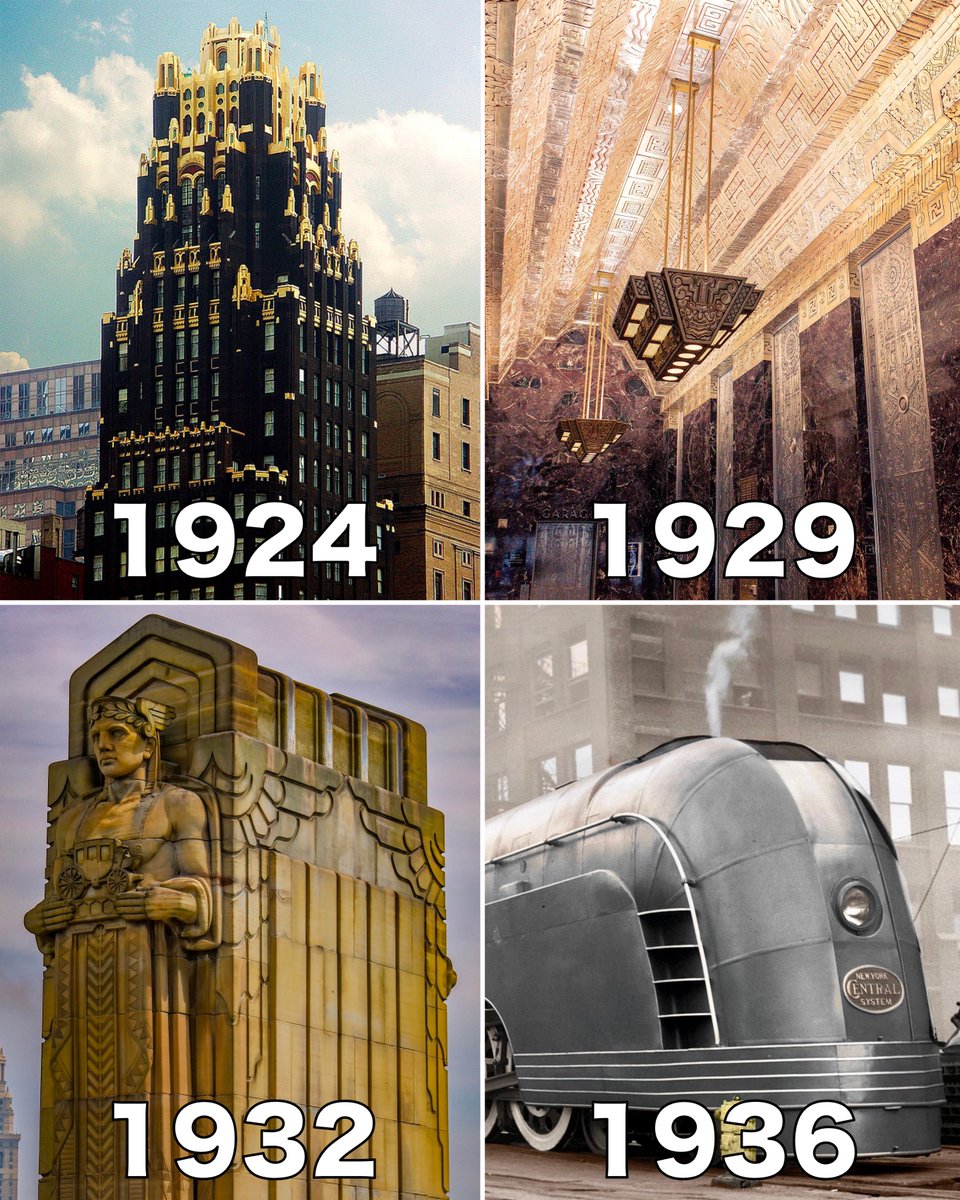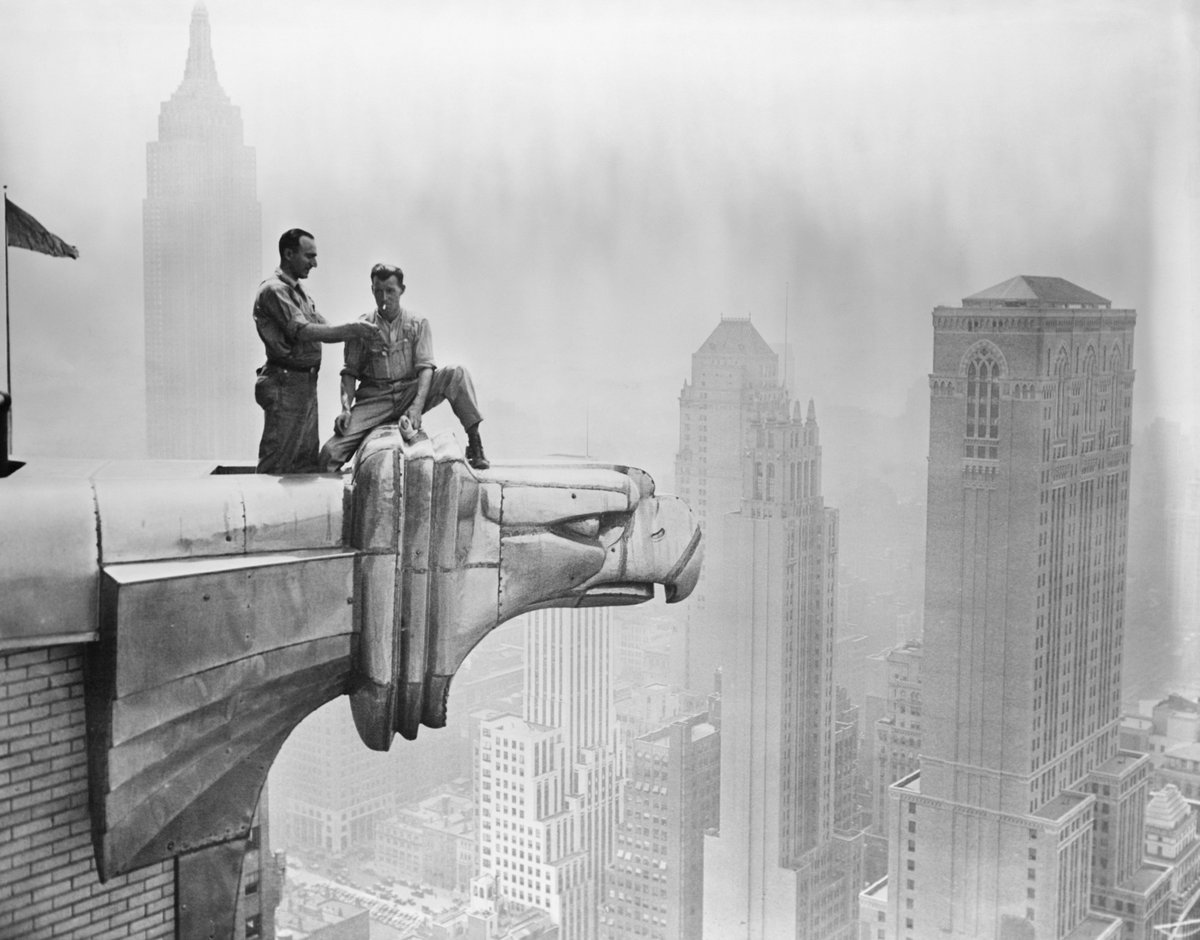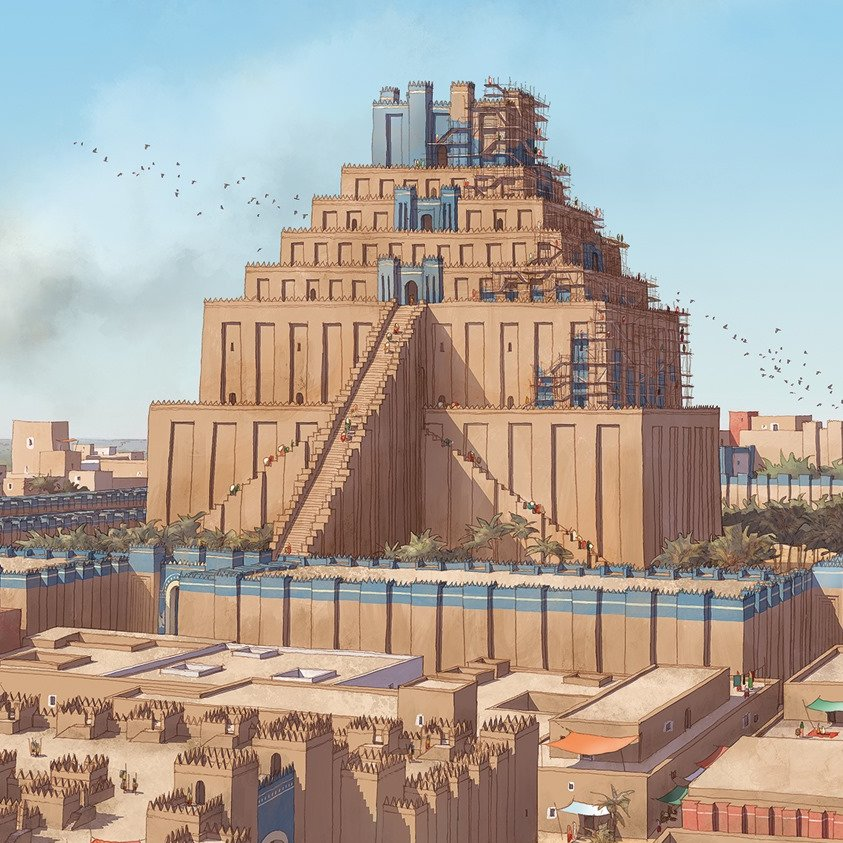The most uplifting architectural revival happening today is in Budapest.
The city is reclaiming its identity after decades of communist rule.
Here's what's going on... (thread) 🧵
The city is reclaiming its identity after decades of communist rule.
Here's what's going on... (thread) 🧵
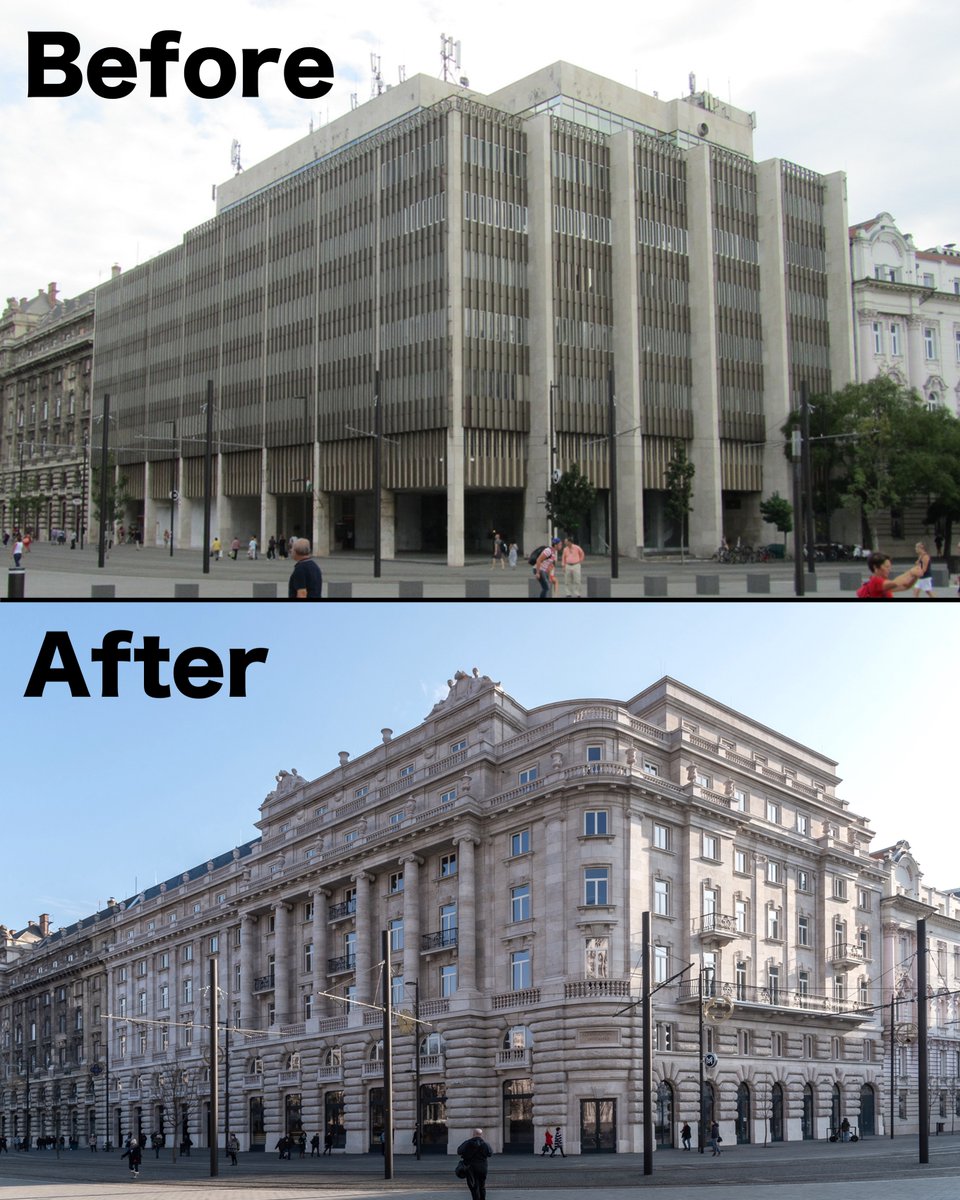
And another example. Façades (and much more) all across the city are being brought back to life.
So why is it happening?
So why is it happening?

In the 19th century, Budapest became a twin capital of the Austro-Hungarian Empire. It enshrined its lofty ambitions — to be the easternmost bastion of Western civilization — in architecture. 

With the same speed the New World was building, and all the elegance of Paris, Budapest became an eclectic metropolis: neo-Gothic, neo-Baroque, Renaissance revival... 

In WW2, Hitler used the city as a fortress against the Red Army — and this is what happened.
Worse, the majestic Castle District took the brunt of the damage.


Worse, the majestic Castle District took the brunt of the damage.


After the war, the USSR placed a puppet state over Hungary, and rebuilt Budapest to reflect Soviet ideals.
Buildings that could've been saved were razed, and "saved" ones were remade in a new, utilitarian image. This was the new Royal Palace...
Buildings that could've been saved were razed, and "saved" ones were remade in a new, utilitarian image. This was the new Royal Palace...

Any architecture resembling a church or museum was detestable under Khrushchev. "Town planning" became an excuse to raze churches and replace them with statues to the new God: Communism. 

Punishment through architecture happened right across communist-controlled Europe. Dresden was rebuilt from rubble by the Soviets, but in a way that made it a model city of Socialism. 

Things could've been much worse in Budapest. More historicism was preserved than other cities, because the regime couldn't always afford to tear it down. Still, brutalist blocks went up whenever opportunity arose. 

Even when they did rebuild the Royal Palace, "unnecessary" elements were ignored — the city lost its Baroque flair.
Communistic disregard for the beautiful and metaphysical meant Budapest lost its identity...
Communistic disregard for the beautiful and metaphysical meant Budapest lost its identity...

The city's architecture was its cultural heartbeat.
Take Budapest's majestic neo-Gothic parliament. It was designed explicitly to break from Vienna's neoclassical one — making Hungary culturally independent from the Austrian empire.


Take Budapest's majestic neo-Gothic parliament. It was designed explicitly to break from Vienna's neoclassical one — making Hungary culturally independent from the Austrian empire.


When the communist regime fell, it opened the door for change. In 2010, serious efforts to restore Budapest's flair commenced — Orbán's government believes restoring architecture will lift morale. 

Here's the Castle District now. It's being rebuilt to its original grandeur. Complete restoration of the area is targeting 2030, but it's a monumental task — the complex is Europe's second-largest after Versailles. 

Plus, they're being incredibly precise. The lost Royal Riding Hall for instance was constructed exactly to the old measurements.
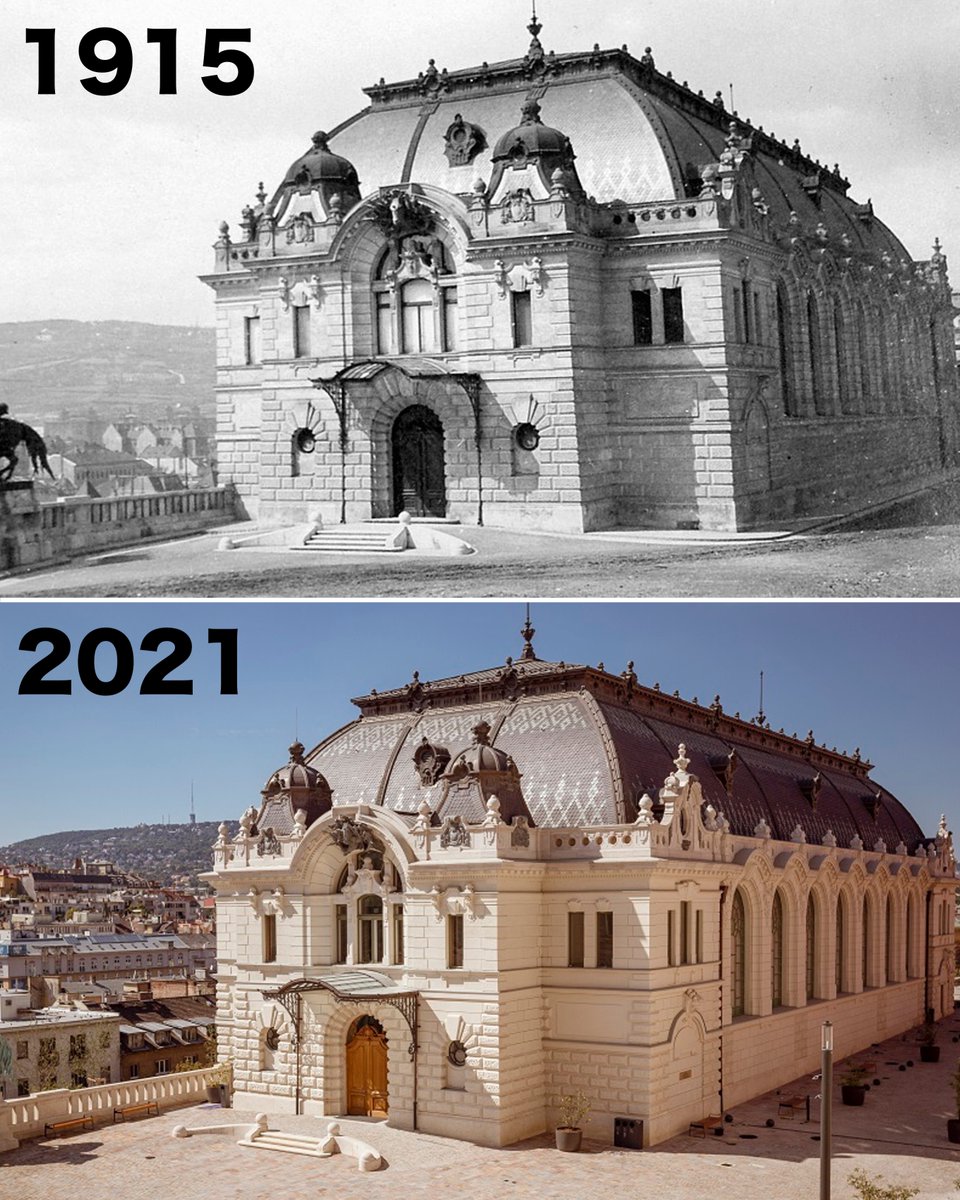
Today in America, debates rage over how new federal buildings should look, with attempts to mandate that they must be traditional or neoclassical form.
But why neoclassical over other styles?
But why neoclassical over other styles?

Well, at America's founding, Jefferson insisted architecture should uplift the nation. Washington D.C.'s classicism showed America had the confidence to compare itself with great empires of the past. 

When you climb the steps of the Supreme Court's Roman basilica for example, it makes you contemplate the millennia of progress that built the legal system. 

That same confidence is what built old Budapest.
Today, it's looking back again — so that the grandeur of the past can help it look boldly again to the future...
Today, it's looking back again — so that the grandeur of the past can help it look boldly again to the future...

If threads like this interest you, you NEED my free newsletter.
40,000+ people read it: art, culture and history 👇
culturecritic.beehiiv.com/subscribe
40,000+ people read it: art, culture and history 👇
culturecritic.beehiiv.com/subscribe
Perhaps neoclassicism isn't the only answer for America.
Art Deco was great because it was rooted in ancient architectural principles, but with modern flair...
Art Deco was great because it was rooted in ancient architectural principles, but with modern flair...
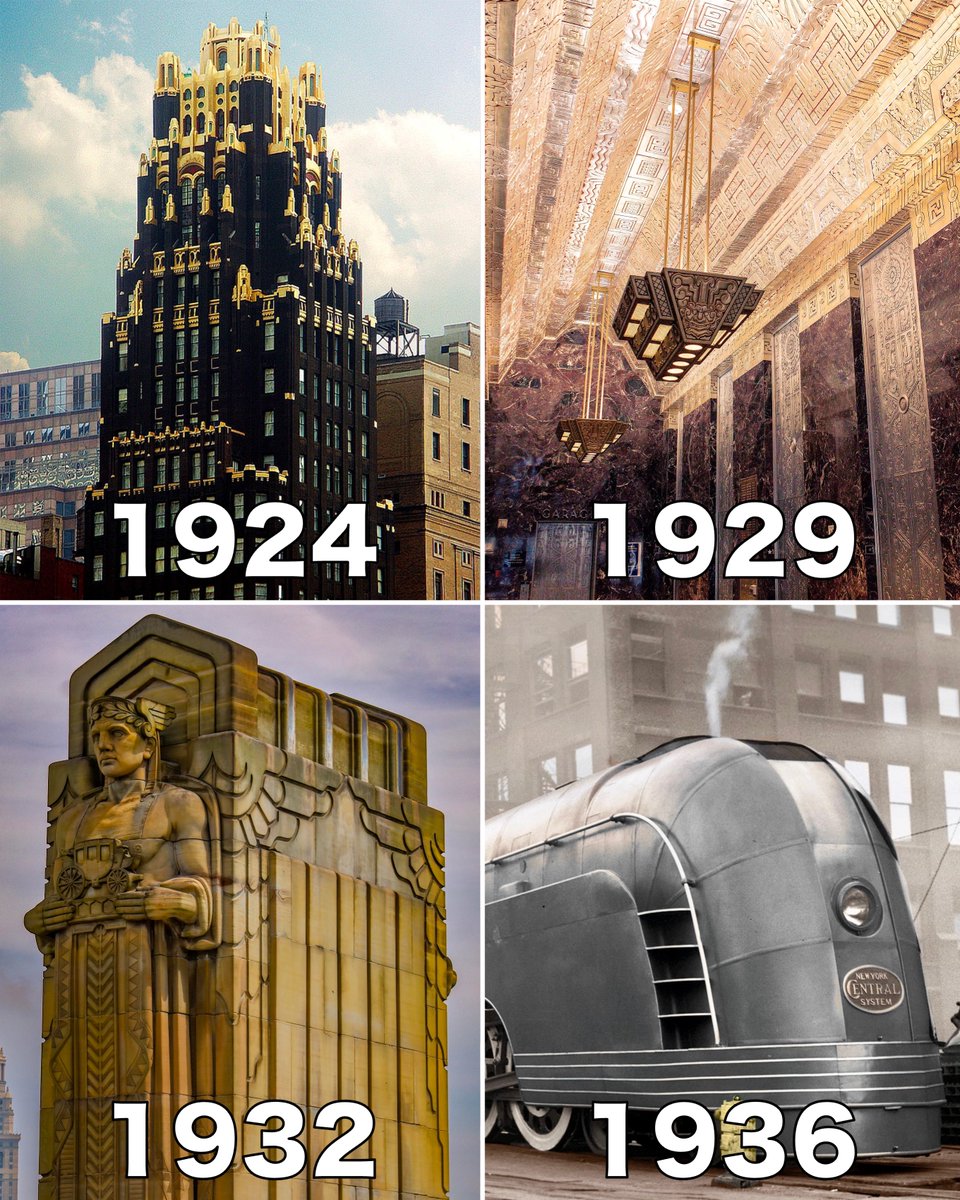
• • •
Missing some Tweet in this thread? You can try to
force a refresh


